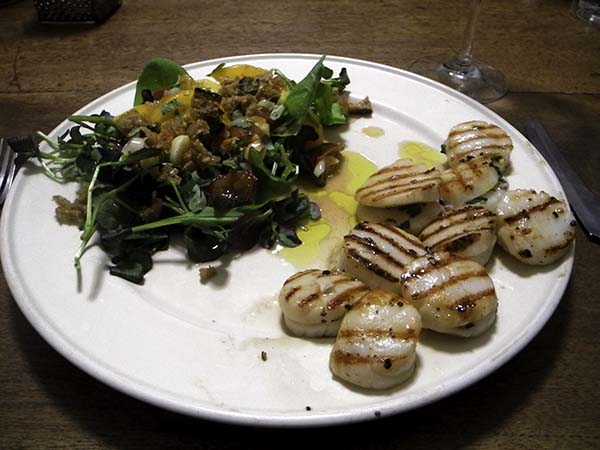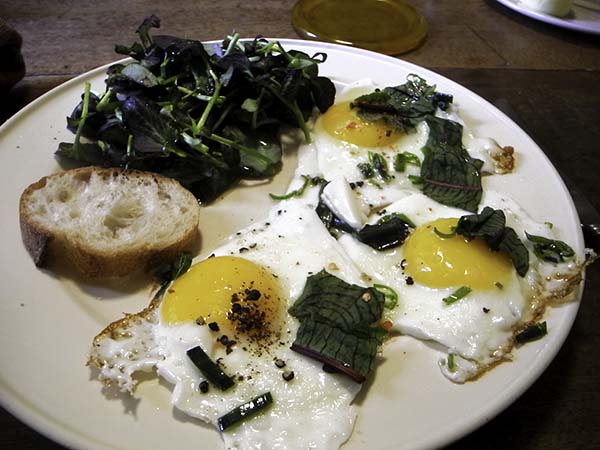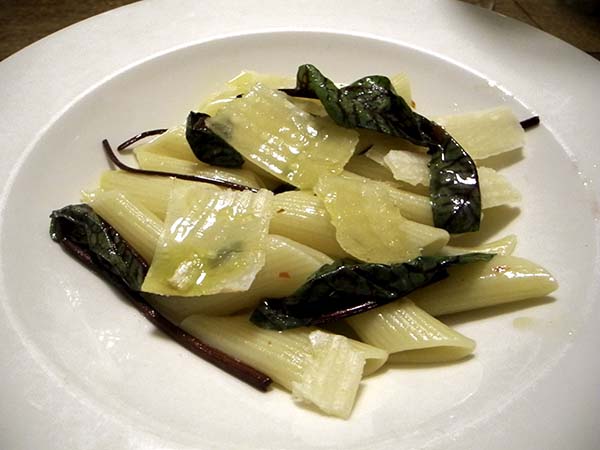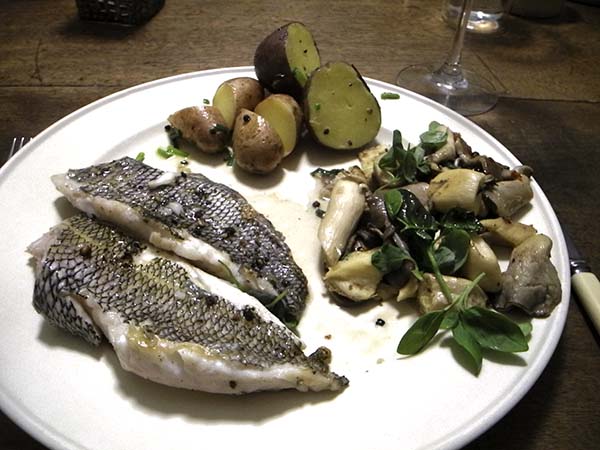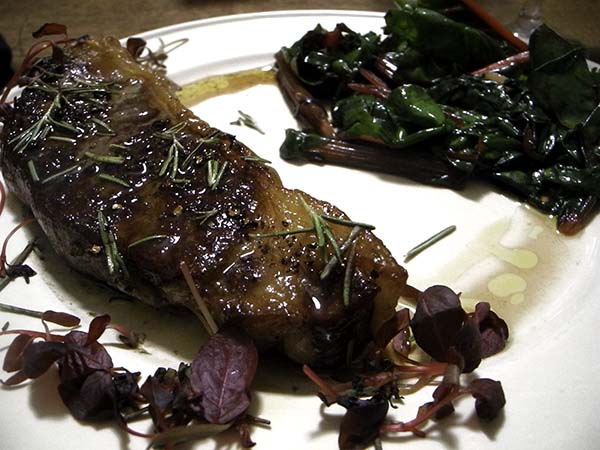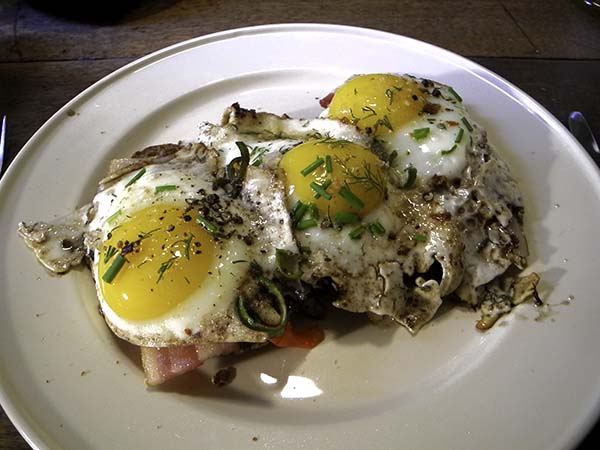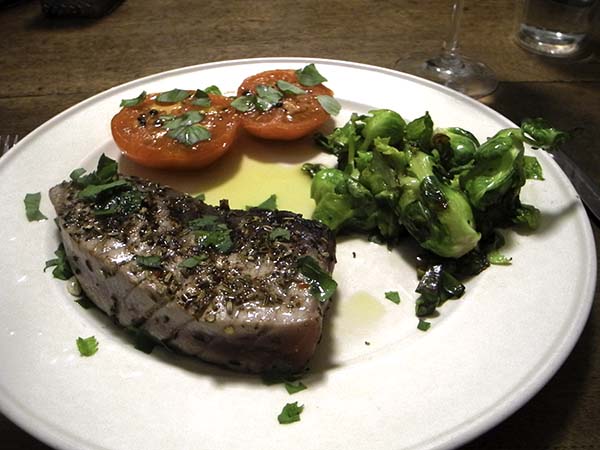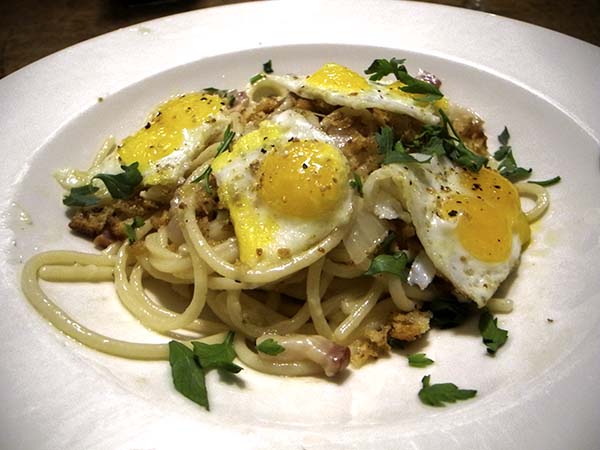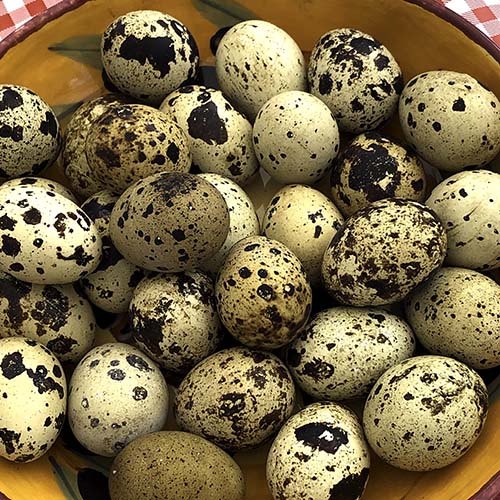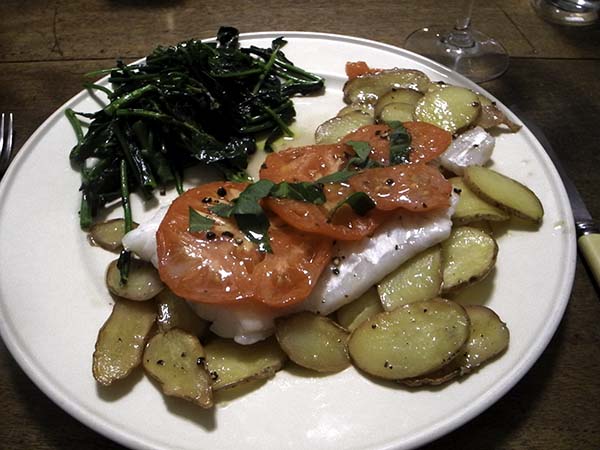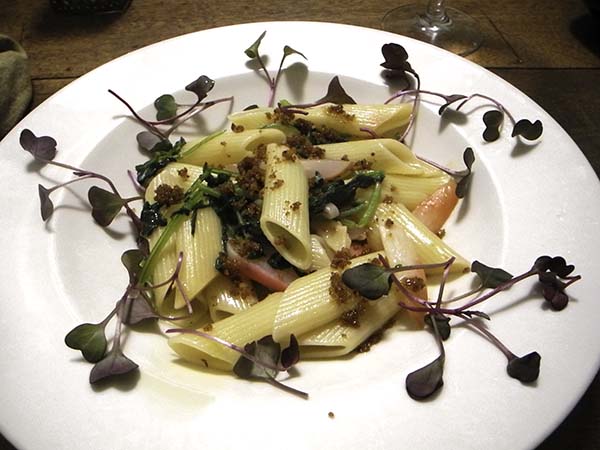
I love radishes. This bowl of pasta boasts 3 forms of radish.
- two tablespoons of homemade breadcrumbs (a stash that had been set aside separately because it they had come from some darker, pretty sturdy bread) added to a cast iron skillet in which a tablespoon of olive oil had been heated over a medium flame, toasted, stirring frequently, until golden and crisp (only a minute or two), transferred to a small bowl and mixed with a little lemon zest, then set aside while the pasta was prepared: eight ounces of really good Setaro Penne Rigate from Buon Italia, cooked al dente inside a large pot of boiling salted water and drained, with one cup of pasta cooking liquid reserved, added to a sauce which had begun with a few ounces of oblong French Breakfast radishes from Alewife Farm, sliced lengthwise into 4 sections, sautéed in a tablespoon of olive oil over medium-high heat inside a large antique copper high-sided pan until they were tender and beginning to brown in spots (about 2 minutes), the radishes removed to a small bowl and a little more oil added to the pan together with one sliced stem of spring, or green, garlic from Lani’s Farm, the allium stirred until fragrant, which was basically a matter of seconds, followed by the addition of the fresh radish greens, removed from the roots when purchased, washed earlier in several changes of water then roughly chopped, along with almost a cup of the reserved pasta cooking water, the leaves stirred for a few seconds, until only beginning to wilt, the cooked pasta itself now added and mixed in with the greens, stirring, the reserved pasta water poured over it, and the mix stirred until the liquid had emulsified, the reserved radishes themselves now tossed in, followed by a half tablespoon or so of lemon juice and some sea salt, freshly-ground black pepper, and a pinch of dried smoked serrano pepper from Eckerton Hill Farm, the sauced pasta arranged in 2 shallow bowls, sprinkled with the bread crumb mixture prepared earlier, the edges drizzled with a little olive oil, garnished with purple micro radish from Windfall Farms
- the wine throughout was a Portuguese (Douro) white, Quevedo Family Alvarinho 2018, from Naked Wines

April 16
